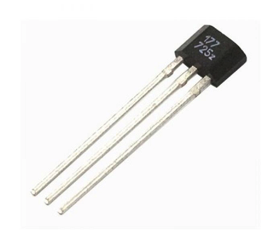
A Hall effect sensor is a transducer, which shifts its yield voltage in response to a magnetic field. These sorts of sensors are utilized for proximity awareness, detection of speed, and use of other sensing programs. To sum, it works like a simple transducer, therefore redirecting the voltage back to start. Its separation from the Hall plate can be resolved with a known attractive field. By utilizing gatherings of Hall effect sensors, the relative position of the magnet can be resolved. The power, which is helped by a conductor, will create an attractive field, which shifts as indicated by the current. The sensor can accordingly be utilized as a part of a request to gauge the current without intruding on the circuit. The sensor is regularly incorporated into a lasting magnet or an injury center that encompasses the conductor to be estimated.
The US1881 is an incorporated Hall impact locked sensor. It holds the magnet close to the sensor in order to the transmitter to stick to flip. This makes for a vigorous nearness sensor. An inner band gap controller is utilized to give temperature repaid supply voltage to interior circuits and permits a wide working supply to extend.
The price for the HES ranges from two dollars up to thirty, depending on store and brand. The HES can be purchased online from electronic stores.
https://www.youtube.com/watch?v=wpAA3qeOYiI
https://www.youtube.com/watch?v=G2TFi3UPHWA
https://maker.pro/education/a-simple-guide-to-using-a-hall-effect-sensor-with-arduino